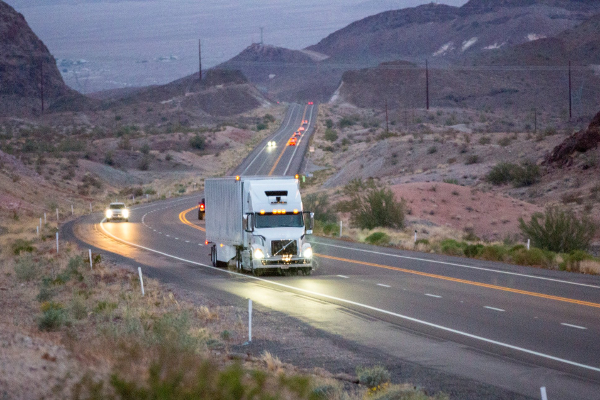 EMERGING TECH
EMERGING TECH
 EMERGING TECH
EMERGING TECH
 EMERGING TECH
EMERGING TECH
Uber Technologies Inc.’s autonomous driving plans are not limited to developing robotaxis. The company is also working to apply the technology to freight shipping, an effort that it announced today has reached an important milestone.
Uber is now using self-driving trucks to transport cargo for commercial customers in Arizona. The vehicles, which have been hauling merchandise for a few months now according to The New York Times, are accessible to companies via the Uber Freight app that launched last May.
The service essentially applies the ride-hailing model to shipping with a few key changes such as the ability to schedule deliveries in advance. Uber’s self-driving truck push kicked off only a few quarters before the launch of Uber Freight with the 2016 acquisition of Otto Inc., a deal that sparked a lawsuit from Alphabet Inc.’s autonomous driving subsidiary Waymo. The companies settled the dispute last month for $245 million.
Despite the bumps along the way, Uber’s self-driving truck initiative has made a great deal of progress since the Otto deal. The newly revealed Arizona pilot implements a model wherein the autonomous vehicles work in tandem with human drivers to carry out shipments.
When an order arrives, a trucker is assigned to pick up the cargo from the loading area and haul it to a transfer station. There, the trailer is attached to one of Uber’s robot trucks, which makes a long-distance highway trip to another transfer station near the final designation. For the last stretch of the journey, the trailer is transferred to a third truck driven by a human, who then hauls it to the customer’s site.
Uber is limiting its robot trucks to highway driving because the onboard artificial intelligence is not yet equipped to handle the busy traffic of urban areas. For added measure, a human safety driver sits behind the wheel during trips and can take over in the event that something throws off the navigation system.
The early trials that Uber is currently conducting in Arizona are no doubt meant as a stepping stone to an eventual national expansion. The $726 billion trucking market represents a major opportunity for the ride-hailing giant, but building an autonomous delivery fleet capable of operating on a large scale won’t be easy.
Support our mission to keep content open and free by engaging with theCUBE community. Join theCUBE’s Alumni Trust Network, where technology leaders connect, share intelligence and create opportunities.
Founded by tech visionaries John Furrier and Dave Vellante, SiliconANGLE Media has built a dynamic ecosystem of industry-leading digital media brands that reach 15+ million elite tech professionals. Our new proprietary theCUBE AI Video Cloud is breaking ground in audience interaction, leveraging theCUBEai.com neural network to help technology companies make data-driven decisions and stay at the forefront of industry conversations.